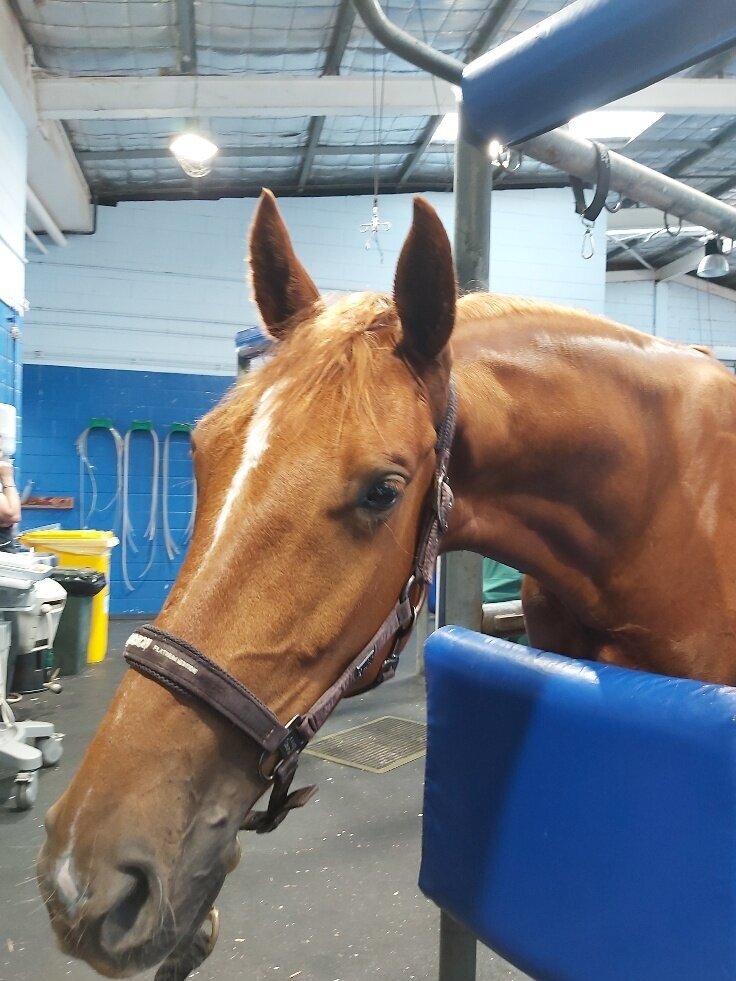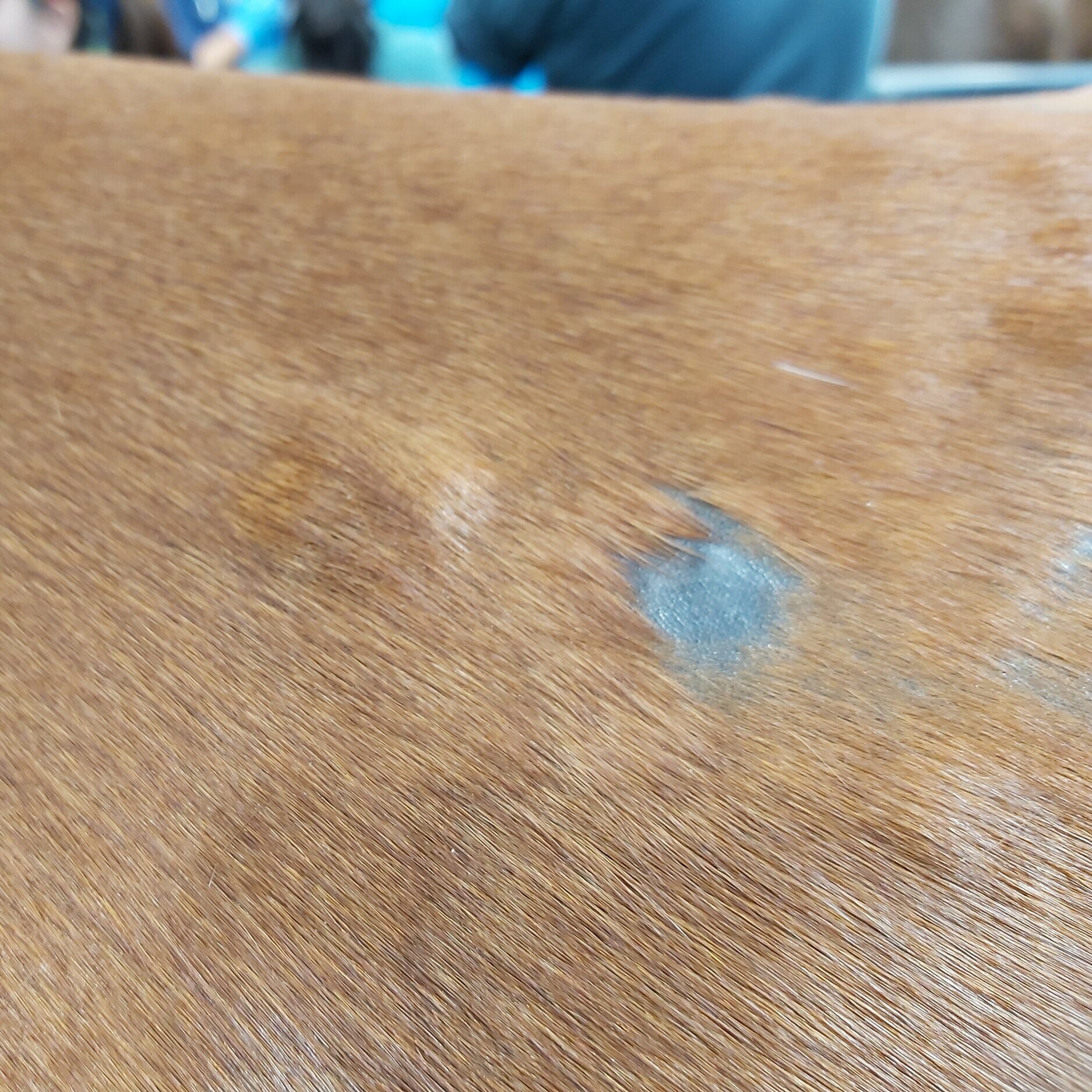Equine Eosinophilic Granuloma
Name: Azzy Latto | Equine Eosinophilic Granuloma
Clinical Lesion
Azzy being allergy tested
Azzy reading the allergy results
History: Azzy presented for further evaluation of equine eosinophilic granuloma. Eosinophilic granuloma is the most common inflammatory nodular skin disease of the horse. The cause and pathogenesis is multifactorial, however atopic dermatitis and insect hypersensitivity are common underlying triggers. The lesions appear as raised, firm, dermal to subcutaneous nodules that are usually non-painful and non-pruritic, usually located on the dorsum, in the saddle region. Intralesional triamcinolone had been administered previously with a good initial response but followed by relapse. Azzy was referred to The Animal Dermatology Clinic - Perth for further investigation.
Test /Procedure: A skin biopsy was collected and submitted for histopathology and bacterial and fungal deep tissue culture. Intradermal allergy testing and serum allergen evaluation were performed to identify the causative allergic triggers.
Results: Histopathology confirmed a diagnosis of eosinophilic granuloma with mineralisation and fibroplasia confirming chronic inflammation. The tissue culture was negative. Allergy testing demonstrated strong positive reactions to insects and dust mites and moderate positive reactions to weeds, tree pollens and grasses.
Diagnosis: Eosinophilic granuloma; equine atopic dermatitis (dust/storage/fodder mite and pollen) and equine insect hypersensitivity,
Treatment and Prevention: Azzy’s ongoing allergy management plan includes a combination of insect avoidance strategies, environmental modification and immunotherapy.
Insect repellents such as 4% permethrin (Permoxin ® Dermcare) are very effective for horses when applied daily. These can be sprayed or wiped onto the body and are commonly mixed with diluted QV® Ego bath oil to increase adherence to the hair coat. QV® Ego bath oil can be beneficial for atopic horses restoring skin and hair coat health and improving defective skin barrier function. Circulating fans in the stable environment as well as lightweight cotton rugs when outdoors can reduce insect contact and exposure. Dust/storage/fodder mite burdens can be decreased by steaming hay and replacing wood shavings and other dusty beddings and floorings with rubber mats.
Treatment options for eosinophilic granulomas in horses include low dose oral prednisolone, intralesional triamcinolone and/or surgical excision. Reducing pressure on the lesions by using padded saddle blankets is an important part of the management. We believe that reducing allergen exposure and immunotherapy constitutes an important part of management.
Follow Up: Azzy will commence maintenance immunotherapy and allergy desensitisation. Long term immunotherapy in conjunction with insect and dust avoidance strategies will be an important component of the management plan.




